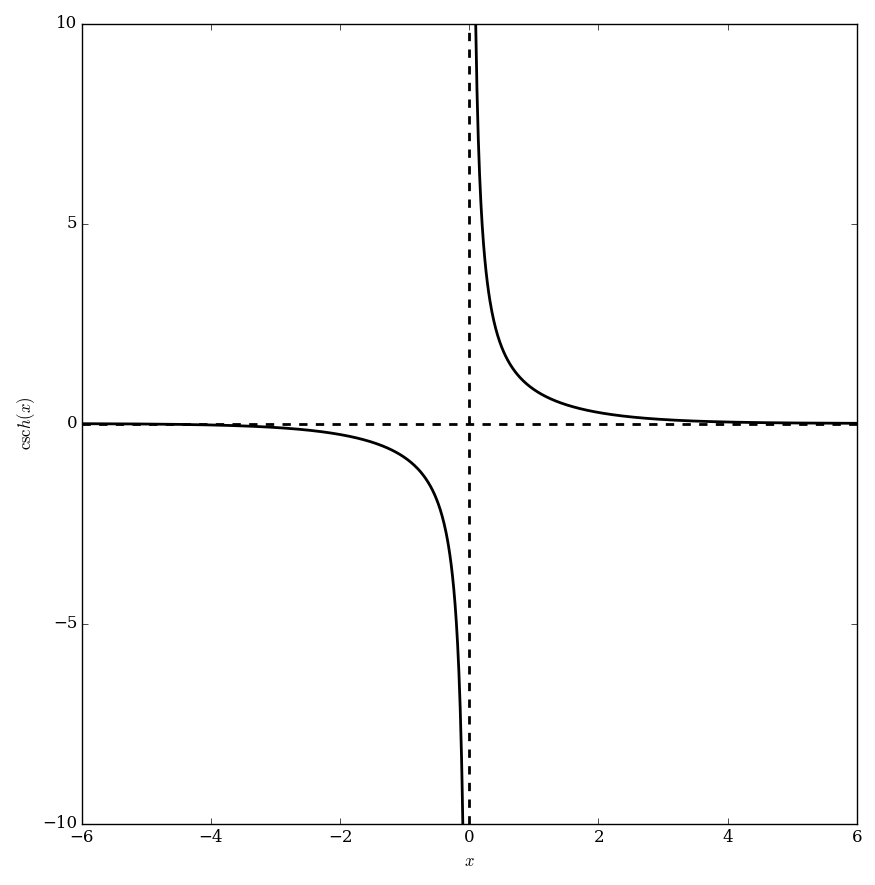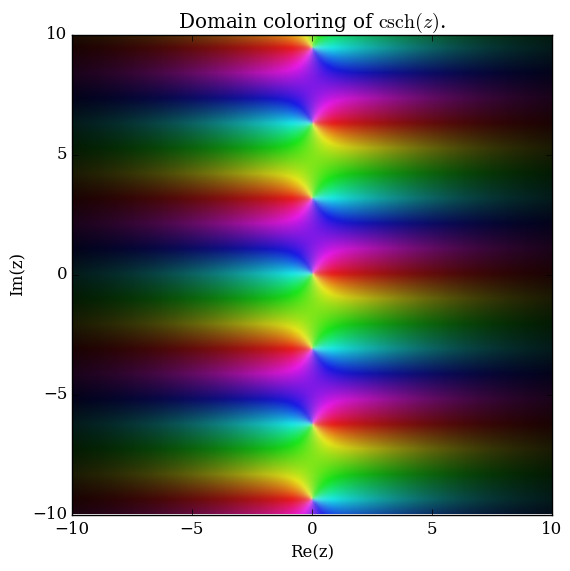Difference between revisions of "Csch"
From specialfunctionswiki
| Line 17: | Line 17: | ||
[[Relationship between cot, Gudermannian, and csch]]<br /> | [[Relationship between cot, Gudermannian, and csch]]<br /> | ||
[[Relationship between csch, inverse Gudermannian, and cot]]<br /> | [[Relationship between csch, inverse Gudermannian, and cot]]<br /> | ||
| + | [[Pythagorean identity for coth and csch]]<br /> | ||
=See Also= | =See Also= | ||
Latest revision as of 23:35, 21 October 2017
The hyperbolic cosecant function $\mathrm{csch} \colon \mathbb{R} \setminus \{0\} \rightarrow \mathbb{R} \setminus \{0\}$ is defined by $$\mathrm{csch}(z)=\dfrac{1}{\sinh(z)},$$ where $\sinh$ denotes the hyperbolic sine. Since this function is one-to-one, its inverse function, the inverse hyperbolic cosecant function is clear.
Domain coloring of analytic continuation of $\mathrm{csch}$.
Properties
Derivative of hyperbolic cosecant
Antiderivative of hyperbolic cosecant
Relationship between csch and csc
Relationship between cot, Gudermannian, and csch
Relationship between csch, inverse Gudermannian, and cot
Pythagorean identity for coth and csch
See Also
References
- 1964: Milton Abramowitz and Irene A. Stegun: Handbook of mathematical functions ... (previous) ... (next): $4.5.4$

